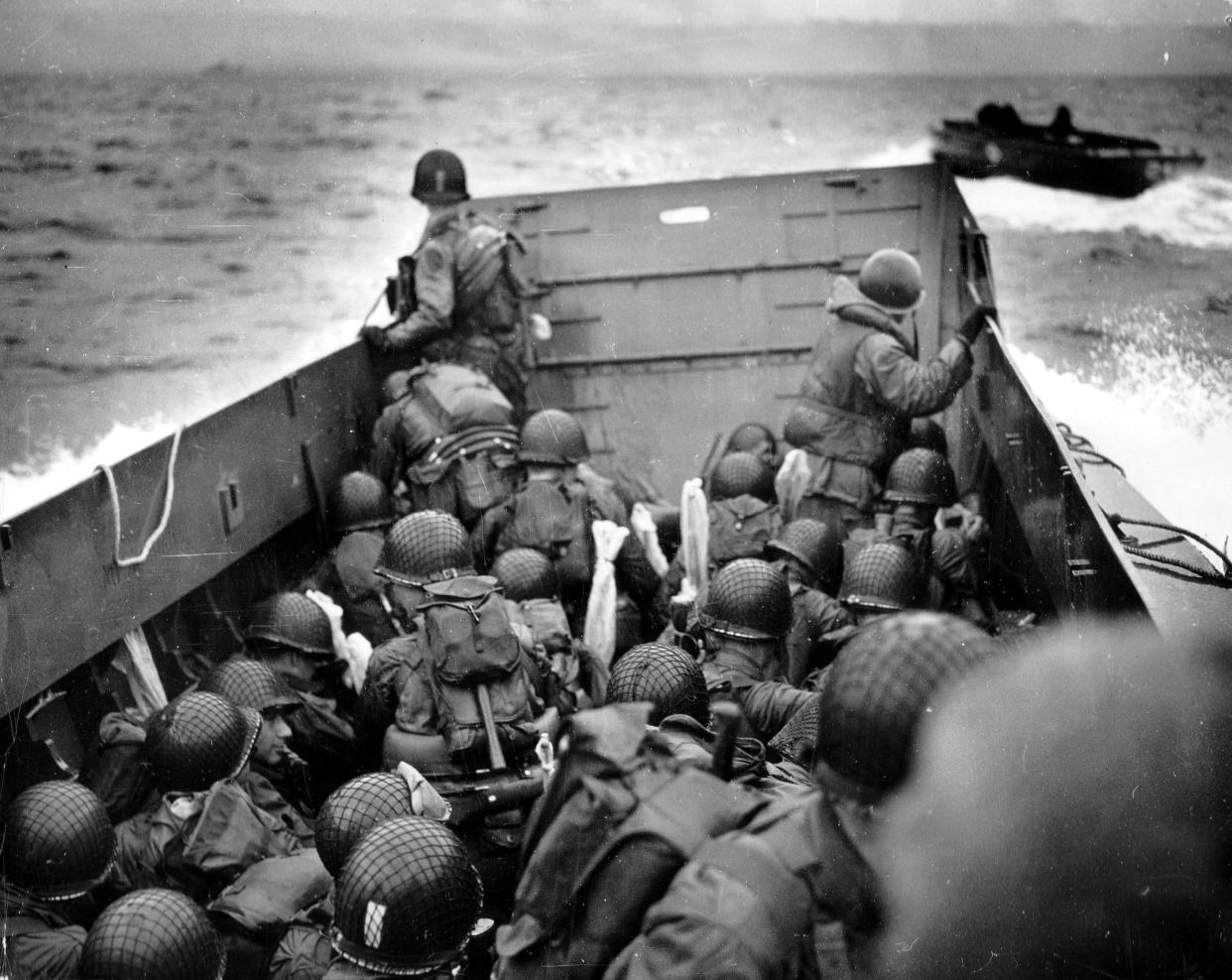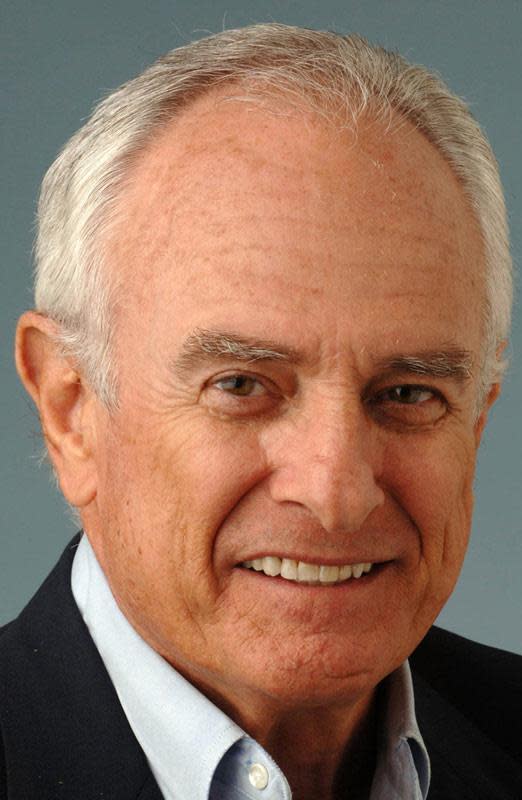Loran Smith: A recollection of meeting D-Day heroes and an imposter

- Oops!Something went wrong.Please try again later.
The D-Day invasion initially was scheduled for June 5, 1944, but because of inclement weather, it was postponed for a day which meant that the giant Allied Armada departed from Portsmouth, England, and crossed the English Channel, 161 miles, to Normandy on June 6.
By starting the invasion in such foul weather, the Nazi’s were taken by complete surprise. The weather leading up to the invasion was so bad that the lead German general, Erwin Rommel, had taken a break to return to Germany for his wife’s birthday.
Then there was Hitler’s refusal to accept the Normandy landings as the real thing. He had become convinced that the invasion would come 175 miles north at Pas-de-Calais and concluded that the Allied attack at Normandy was a feint.

With his nocturnal habits, Hitler slept through the invasion; his staff was afraid to disturb him. As a result, he did not release his heavy armored divisions at the most critical time; one of several factors that enhanced the Allied success in getting ashore. They were not thrown back into the sea as the Nazi’s had projected. The beginning of the end of World War II had begun.
For years, I have read and researched details of the invasion along with its innumerable sidebars and vignettes. There have been countless books to read and enjoy. By no means, am I expert, but have enjoyed meeting and interviewing dozens of men and women who had fascinating stories to tell about their D-Day experiences.
I even met an imposter who was so believable that he duped one and all, including the French government, until somebody figured out that his story was a sham.
More: One company of U.S. soldiers sparked success on D-Day. What to know about the angels of Omaha.
Loran Smith: Choosing Athens as a hometown means believing in Kirby Smart and a three-peat
The disclosure left him in disgrace which made him a pariah in St. Mere Eglise, where he had become something of a cult hero to the populace. He regaled everybody, friend and stranger alike, with his tales about his being a paratrooper who landed with the 82nd Airborne on the day of the invasion.
Cruising up the Seine River from Paris to Compiegne on a small boat with a friend was an experience that was not only memorable but brought about serendipitous opportunity. On the trip, he shared with me a book, “Pegasus Bridge,” by Stephen E. Ambrose, to whom Coach Wallace Butts offered a scholarship to play football at UGA. (Ambrose enrolled at Wisconsin instead.)
It was the story of the commandoes who took the bridge over the Orme River canal in the British sector on D-Day. Their glider landed right near the bridge which enabled them to surprise the Germans before they could blow up the bridge.
This group was able to liberate the first French family of the war, the Gondree’s. Ambrose’s story was quite illuminating which caused me to meet up with him on the campus of the University of New Orleans on trips to the Crescent City. I am fortunate to have read all his books on the war.
Ambrose organized a seminar with many D-Day participants along with NBC’s Tom Brokaw who had just written a book, “The Greatest Generation.” He and Tom Hanks, star of “Saving Pvt. Ryan,” were the main attractions, along with several WWII survivors.
One of Ambrose’s speaker guests was a former German Panzer commander, Hans Von Luck. A protégé of Rommel, Von Luck, in his remarks, poignantly said, “As a professional soldier, I did my job, but as a human being, I hold no hate.”
Every year in June, I recall the many battlefields, monuments, and grave sites; cities and museums, regretting the senseless taking of lives, but remembering the moving remarks of at least three people who were directly or indirectly connected to the war!
A TV personality in Budapest who took me to see the “Shoes memorial.” (The Nazi’s lined up Jews on the banks of the Danube, shot them in the back of the head, letting them fall in the river and float downstream.” She lost family at Auschwitz and said that she did not believe in God. “How could a God allow 6 million people to be murdered because of their faith?”
A University of Georgia matriculate from Cohutta, in north Georgia, was credited with killing 30 Germans at Pointe du Hoc on D-Day. He hated such publicity but when I asked him if the number was accurate, he exclaimed, “I don’t know. In war you do what you have to do. Furthermore, what damn fool would keep count.”
At La Cambe, where most of the German soldiers are buried at Normandy, I found a revealing printout at the museum. It told the story of a German soldier going home on leave before the war to spend time with his wife. She became pregnant during his visit. He was killed during the invasion and years later, the “leave” daughter left this note at his grave: “On my third trip here I still cannot meet you. How many more daughters will never know their fathers because of war.”
This article originally appeared on Athens Banner-Herald: Loran Smith recalls meeting those who fought on D-Day and an imposter

